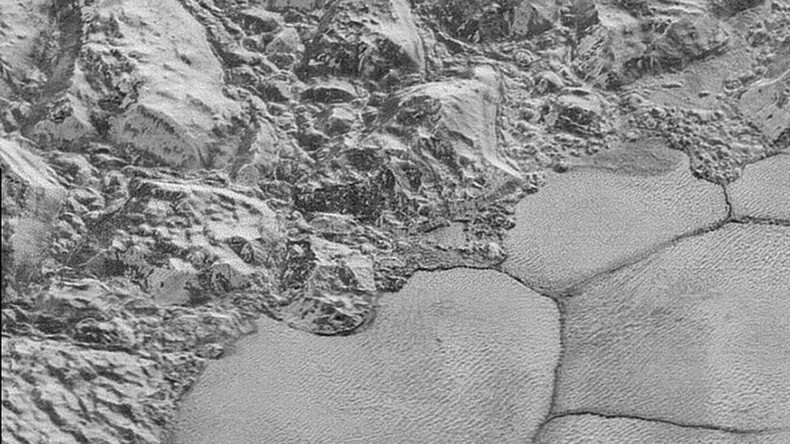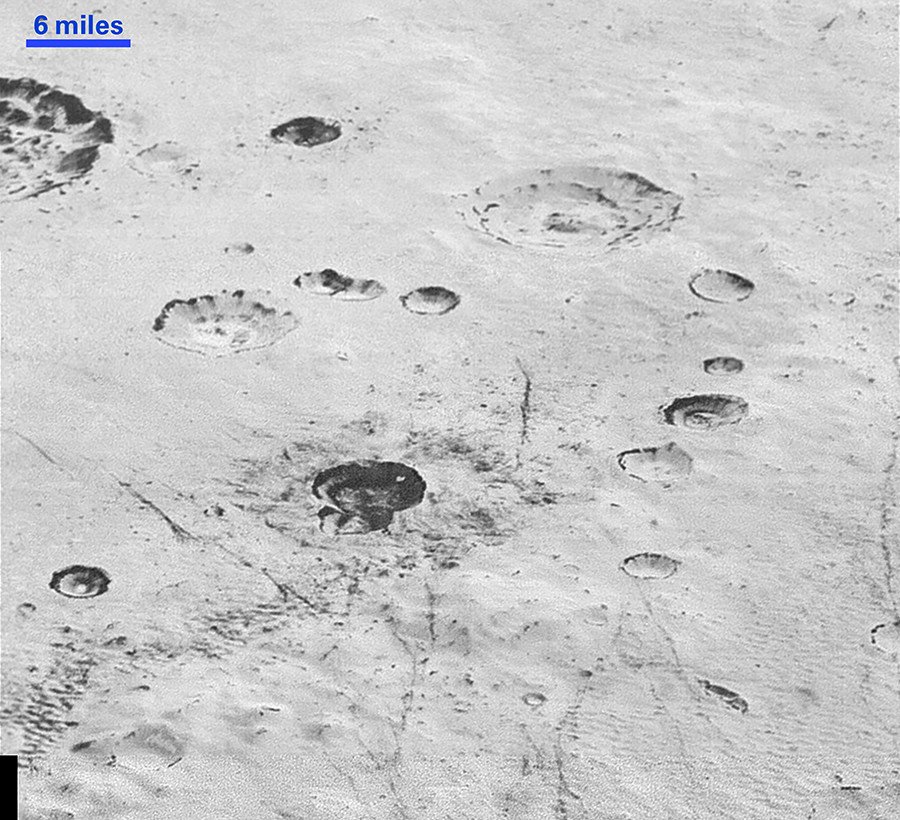NASA ‘amazed’ by the best close-ups of Pluto yet

Three billion miles away, Pluto’s contrasting landscapes can now be seen as if they were half a city block away. NASA’s New Horizons spacecraft captured the “sharpest” images of the dwarf planet in July, but it wasn’t until Friday that they arrived.
Aboard the piano-sized New Horizons is the telescopic Long Range Reconnaissance Imager (LORRI), which snapped shots of mountains, craters and other spellbinding scenes from about 10,000 miles (17,000 kilometers) above Pluto’s surface that people won’t get a glimpse of again for many years, if ever.
'Simply incredible:’ NASA shows off major discoveries from historic Pluto flyby https://t.co/6gtYovygwBpic.twitter.com/ftT7wI0SOE
— RT America (@RT_America) November 10, 2015More images from the July expedition are still coming in, as the spacecraft transmits 1 to 2 kilobits of data per second once a week, meaning the total amount of data collected won’t reach NASA for another year. Thankfully for scientists and enthusiasts, there are enough images available now to make the wait easier.

“These close-up images, showing the diversity of terrain on Pluto, demonstrate the power of our robotic planetary explorers to return intriguing data to scientists back here on planet Earth,” John Grunsfeld, a former astronaut and associate administrator for NASA’s Science Mission Directorate, said in a NASA statement. “New Horizons thrilled us during the July flyby with the first close images of Pluto, and as the spacecraft transmits the treasure trove of images in its onboard memory back to us, we continue to be amazed by what we see.”
The photos’ resolutions of 250-280 feet (77-85 meters) per pixel compiled together create a 50-mile (80 kilometer) view of a diversely contoured area.

“These new images give us a breathtaking, super-high resolution window into Pluto’s geology,” Alan Stern, the New Horizons Principal Investigator from the Southwest Research Institute, said on NASA’s website. “Nothing of this quality was available for Venus or Mars until decades after their first flybys; yet at Pluto we’re there already – down among the craters, mountains and ice fields – less than five months after flyby! The science we can do with these images is simply unbelievable.”
#Mars and life in space: Astronauts testify from the #ISS before House Committee https://t.co/iDKCn8u9Kmpic.twitter.com/vp9FsdhX7C
— RT America (@RT_America) December 3, 2015As the LORRI takes photos every three seconds, the other camera onboard, the Ralph/Multispectral Visual Imaging Camera (MVIC) scans the surface, using very short exposure times to avoid blurring details. The result is brilliant images, six times better than recent global shots of Pluto, according to NASA.












